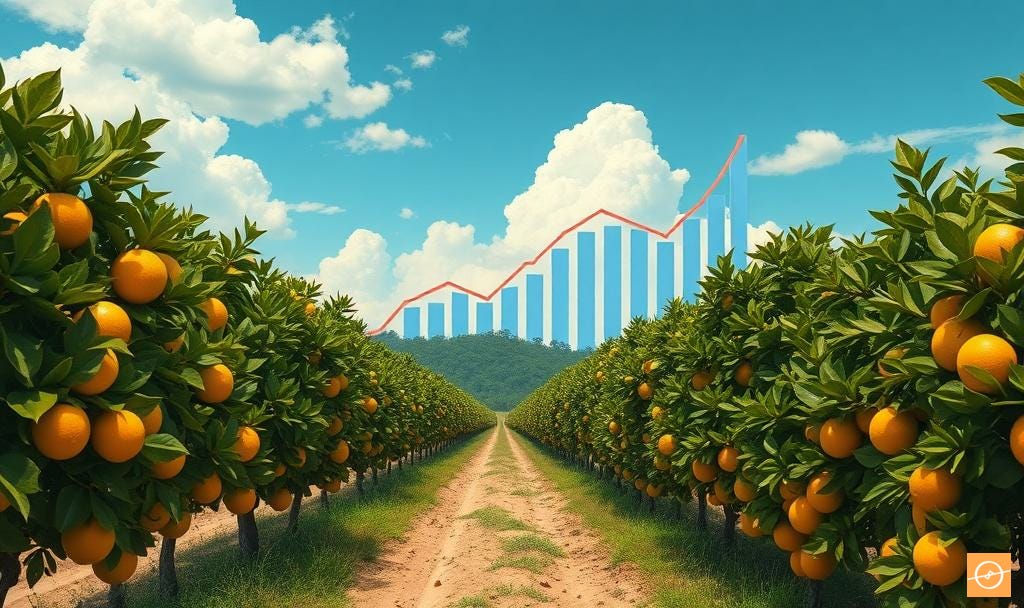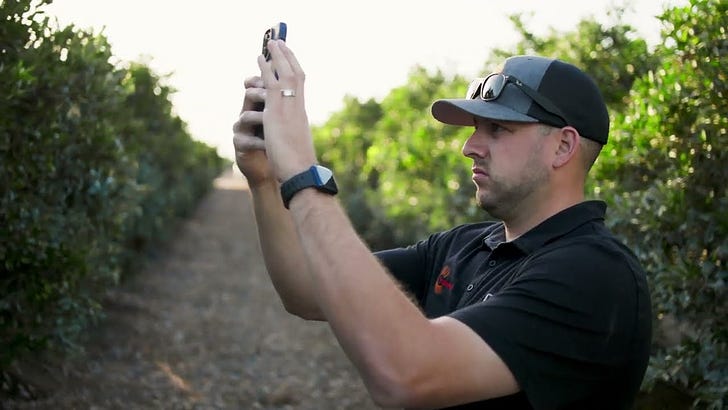AgTech for Citrus at Scale: Emerging Solutions for Global Challenges
Strategic insights on how agricultural technology is reshaping the citrus industry’s response to climate, cost, and competitiveness.
The citrus industry is no stranger to volatility. From market cycles and biosecurity threats to extreme weather and rising input costs, global producers have long operated on a knife’s edge. But the current landscape is different. We’re not just contending with cyclical risks – we’re facing structural shifts.
AgTech, long considered a niche investment, is becoming central to operational resilience and gaining the competitive edge.
The Real-World Problems That Still Demand Attention
Even large, vertically integrated citrus operations are grappling with these persistent challenges:
Labour Shortages & Rising Wages
Automation is not only attractive, it’s becoming essential. Harvesting, pruning, spraying, etc require more labour than many producers can reliably access.Water Scarcity
Extended droughts, prolonged high temperature spells, erratic rainfall, and declining water rights are placing enormous pressure on irrigation scheduling and orchard design. Water efficiency is now a strategic imperative, no longer a “sustainability goal” idea penned for future attention.Energy Costs
Rising fuel and electricity prices are impacting everything from irrigation pumps to pack-house operations. Without optimised systems, energy costs are quietly (but furiously) eating into already narrow margins.Pest and Disease Pressure
Citrus specific biological threats are moving faster than most scouting methods can detect. By the time human eyes identify an issue, significant damage is often done.Data Fragmentation
Despite years of investment in farm management software, few operations have succeeded in integrating everything from in-field telemetry and sensors, to yield and market forecasts, all into one actionable system.Carbon and Compliance Pressures
Retailers and governments alike are asking more about carbon footprints, spray records, biodiversity action plans, and input provenance. The pressure to prove sustainability is mounting.
The Emerging Technologies Gaining Ground
Here’s where AgTech is stepping in with real promise:
Computer Vision for Yield Forecasting and Fruit Sizing
AI-powered imagery platforms (ie. TrueFruit) are enabling pre-harvest yield estimation and accurate sizing predictions. This supports marketing, pack-house prep, and enhanced orchard ROI models.Autonomous and Semi-Autonomous Sprayers and Harvesters
Companies like GUSS (Global Unmanned Spray System) are changing how large farms apply inputs. Improving uniformity, reducing drift, and running multiple machines with minimal staff.Irrigation Optimisation Platforms
Remote sensing (thermal + multispectral) paired with real-time soil moisture probes is driving variable rate irrigation (VRI). The result? Higher efficiency, lower energy costs, and improved fruit size uniformity.Drone-Driven IPM and Biological Control Deployment
Precision aerial release of beneficial insects is already happening in vineyards and citrus orchards. SkyBugs and similar startups are deploying natural enemies to reduce pesticide reliance.Digital Twins and Predictive Models
Some of the more advanced operations are building ‘digital twins’ of their orchards – integrating tree health, microclimate, irrigation, and forecast data to simulate outcomes and test interventions before acting.Blockchain for Supply Chain Traceability
For exporters targeting premium markets, end-to-end digital traceability is becoming a differentiator. Technologies like blockchain-backed tracking for cartons are seeing uptake, especially where food safety and origin assurance is non-negotiable.
"AgTech won’t replace citrus experts. But it will reward those who can blend technology with traditional wisdom."
What Citrus Executives Should Focus On
Interoperability, not novelty.
Your tech stack must talk to itself. Point solutions that can’t integrate with ERP or agronomic tools are a sunk cost.
To avoid this, ensure your tech stack is built with interoperability in mind, focusing on systems that can communicate with each other to streamline workflows (and data flow), preventing data silos; while improving overall efficiency.
ROI and scale-readiness.
Not every innovation scales to 1,000 hectares, or 10,000, or more. Vet pilot-stage technologies through the lens of operational complexity, not curiosity alone.
Some AgTech solutions are mind-blowing.
But do they scale, and can they fit into your organisation with minimal disruption to the inner workings of the business machine?
Focus on talent, not tools alone.
AgTech success hinges on people who can translate data into decisions.
Seriously consider training up-and-coming agronomists, not only IT support, on technologies and innovations.
Empowering practicality with technology, with a healthy dose of youthful enthusiasm will take your operations to the next level - and beyond.
Data ownership and platform control.
Who owns the data when you partner with a third-party provider? How secure is your proprietary performance insight?
"The biggest risk isn’t buying the wrong tool; it’s standing still."
The Cost of Waiting
The biggest risk isn’t buying the wrong tool; it’s standing still.
As consumer preferences shift, regulation tightens, and climate pressure mounts, agility will be defined by the speed of insight and response.
AgTech won’t replace citrus experts. But it will reward those who can blend technology with traditional wisdom.
This is no longer about adopting a gadget. It’s about rethinking the business model of citrus production… from tree to trade.







